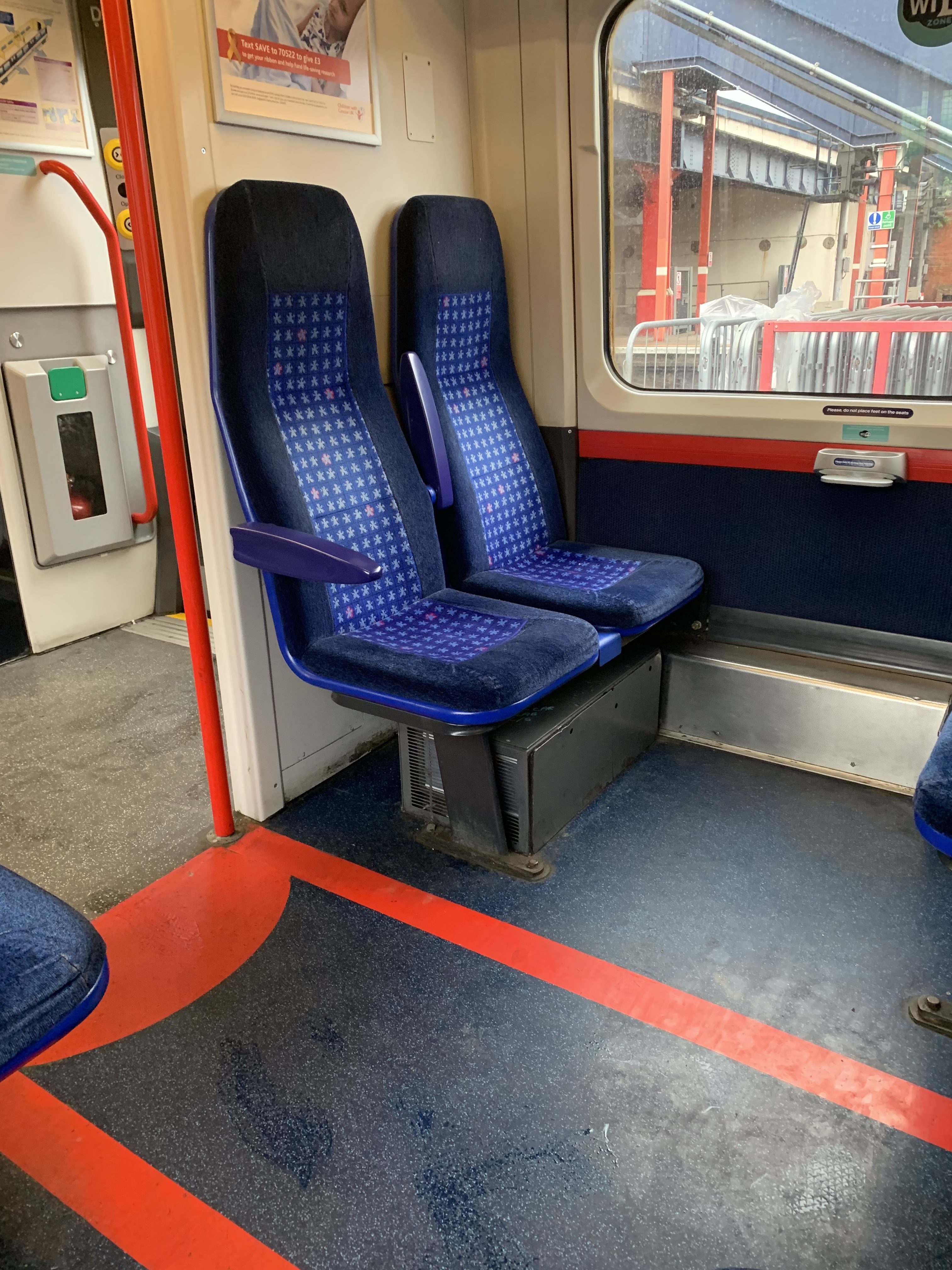Leading 3D printer OEM Stratasys, together with British rolling stock operating company (ROSCO) Angel Trains, Derby-based engineering consultancy DB ESG, and train operator Chiltern Railways are trialling 3D printed parts onboard a train in the UK.
Reportedly the first ever 3D printed components deployed within an in-service passenger train in the country, the parts include four armrests and seven grab handles. They have been successfully installed and trialled on Chiltern Railways trains, with the aim of demonstrating the benefits enabled by 3D printing for the railway industry, namely speeding up the process of sourcing replacement parts.
“This is an exciting time for the UK rail industry,” comments James Brown, Data and Performance Engineer, Angel Trains. “With this technology, train operators can be much more responsive to replacing passenger-facing parts that get damaged or vandalized.”
“A 3D printed replacement part can be produced on-demand and installed immediately.”

A consortium tackling the railway industry using 3D printing
The cross-industry collaboration between Angel Trains, DB ESG and Stratasys was first announced in December 2018, where it was revealed that the firms were partnering to 3D print replacement parts for trains.
As a ROSCO firm, Angel Trains, owns and maintains railway carriages and engines, and leases them to train operating companies, like Chiltern Railways, the Great Western Railway (GWR) East Midland Trains, and Arriva Rail London.
DB ESG on the other hand is a consultancy business owned by the major European railway company Deutsche Bahn, the company behind the mobility goes additive network. Deutsche Bahn is also using 3D printing for the on demand replacement of parts on trains, partnering with the likes of GEFERTEC and 3YOURMIND to 3D print spare parts.
The aim of the three-way consortium is to leverage 3D printing to overcome the problems surrounding the replacement of obsolete parts across the UK rail industry. These issues include the small number of train fleets within the rail industry and their ageing condition, with some said to be over 30 years old. Train operators are therefore presented with several challenges when it comes to vehicle maintenance and part replacement.
“In recent times, we’ve seen growing concern amongst operators that sourcing replacement parts for older train fleets at a reasonable cost and in a short time frame is proving increasingly difficult,” explains Brown. “The problem is that traditional manufacturing methods only make it cost-effective to produce high volumes of spare parts, even though an operator may only need a few obsolete train parts replaced. In addition, lead times can take months.”

Stratasys FDM saves time and money for train operators
3D printing can allow train operators to source replacements parts quicker, therefore decreasing the time it takes to get trains back into service. This in turn improves both the maintenance of the trains and the quality of service for passengers, which Angel Trains, DB ESG and Stratasys hope to demonstrate. “This is why we have teamed up with DB ESG and Stratasys, showing how operators can overcome these hurdles by using 3D printing to produce the exact amount of parts they need at a fraction of the time and cost of traditional methods,” Brown adds.
For example, the lead time for armrests currently in-service with Chiltern Railways using conventional manufacturing methods is approximately four months, according to Brown. Using Stratasys FDM 3D printing, the same armrest can be manufactured within a week, decreasing the lead time by 94 percent, with possible savings of up to 50 percent, per part.
Furthermore, sourcing grab handles proves difficult as Angel Train’s original supplier is no longer in operation. To make the parts themselves, it would cost the firm up to £15,000 ($18,587), as it would require an investment into a new manufacturing tool. The production lead time of the part would also be two and a half months. However, all seven grab handles were produced in three weeks, with a lower cost per part, using 3D printing.

DB ESG was responsible for testing a range of industrial-grade 3D printing materials, ensuring that they were compliant to the UK rail industry standard EN45545-2. The final iteration of the parts were 3D printed using the Stratasys Fortus 450mc 3D printer in ULTEM 9085 resin. The material was certified to the rail industry’s fire, smoke and toxicity standards. Martin Stevens, Mechanical Engineering Manager DB ESG comments: “Achieving certification removes a major barrier that has prevented more widespread implementation of 3D printing across UK trains.”
“Our role in this project has been to investigate the design, production and finishing of FDM parts, verifying whether the parts comply with rail standards and checking whether they work in the operating environments.”
The trial’s success means that the group have created a repeatable production process for 3D printed parts that are compliant with rail industry standards and suitable for use in passenger vehicles. Stratasys, DB ESG and Angel Trains now plan to begin its next trial with Great Western Railway. 3D printed parts will be integrated within a selection of the operator’s trains over the next few months.
The three firms are also exploring how 3D printing can enable customized interiors that are better suited to the passenger commute. For example, the companies have tested seat back tables 3D printed with important information in braille, like the location of the toilet. Brown explains that such customization is “unprecedented and can only be enabled by 3D printing, offering the potential to significantly improve both the servicing of trains and the passenger experience in the future.”
Subscribe to the 3D Printing Industry newsletter for the latest news in additive manufacturing. You can also stay connected by following us on Twitter and liking us on Facebook.
Looking for a career in additive manufacturing? Visit 3D Printing Jobs for a selection of roles in the industry.
Featured image shows 3D printed grab handles installed on Chiltern Railways train. Photo via Stratasys.


